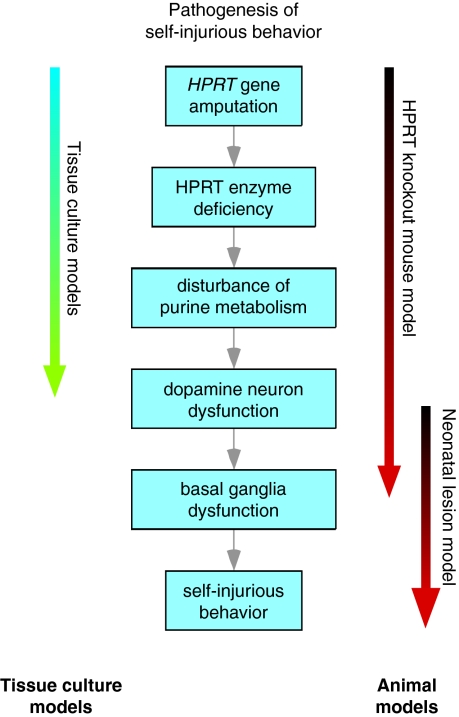Fig. 2.
The roles of different surrogate experimental models in LND. The blue boxes depict the sequence of events that are thought currently to be involved in the pathogenesis of self-injurious behavior in LND. Tissue culture models have been particularly useful in elucidating proximal steps of the pathogenic pathway involving the effects of HPRT deficiency on purine metabolism. Further, some neuronal models have been useful in addressing the steps relating to dopamine neuron dysfunction, but no tissue culture model is suitable for addressing the more complex physiological interactions that occur among different neural elements of the basal ganglia, which potentially lead to the behavioral defects in the more distal steps of the pathway. Similarly, the HPRT-deficient mouse model has been useful for elucidating the more proximal steps in this pathway in an in vivo setting, but it has not been useful for understanding the behavioral abnormality. However, the neonatal dopamine lesion model has been more useful in distal steps of the pathway, beginning with dopamine lesions and ending with expression of the behavior. Each model has characteristics that might render it particularly well suited for studying specific steps in the pathway. There is no ‘ideal’ model that combines all of these strengths, but proper selection of the most appropriate model can address most experimental questions.

